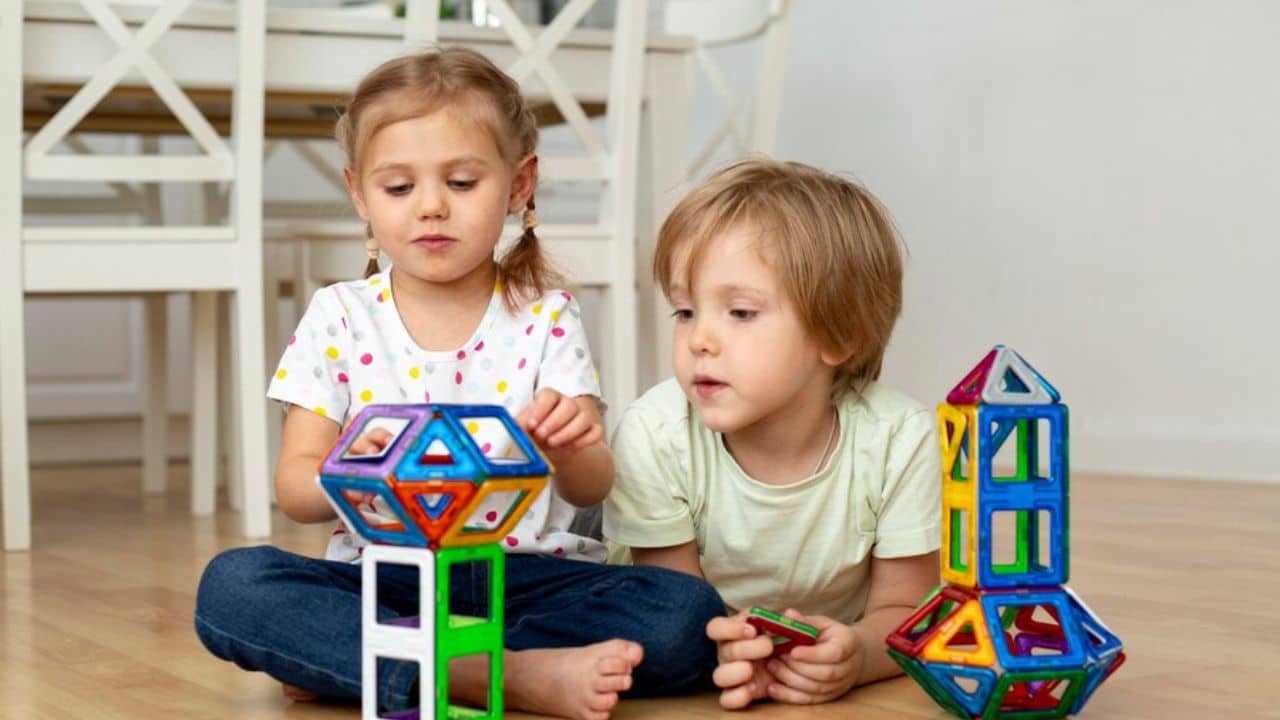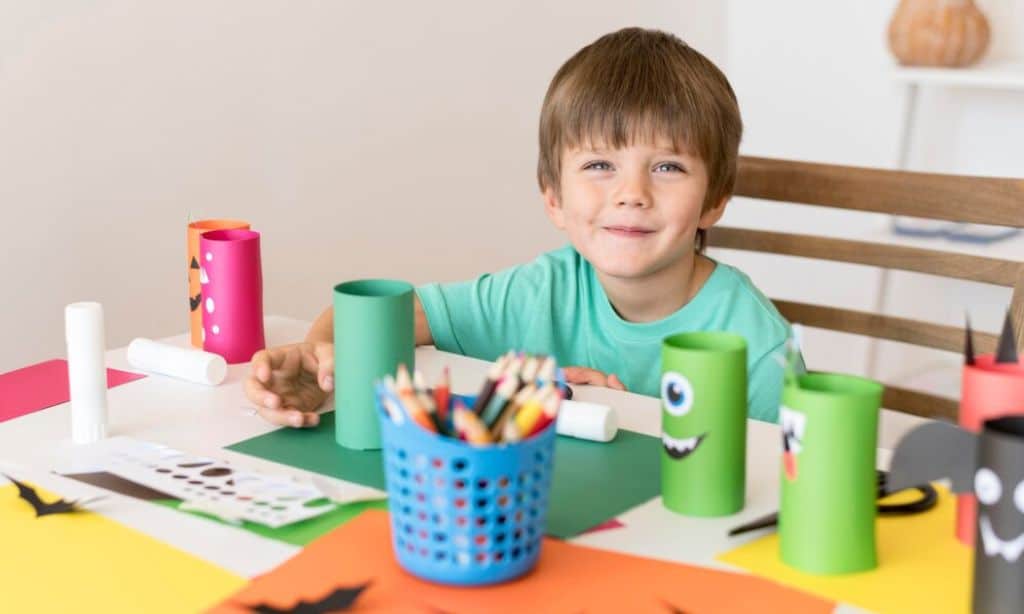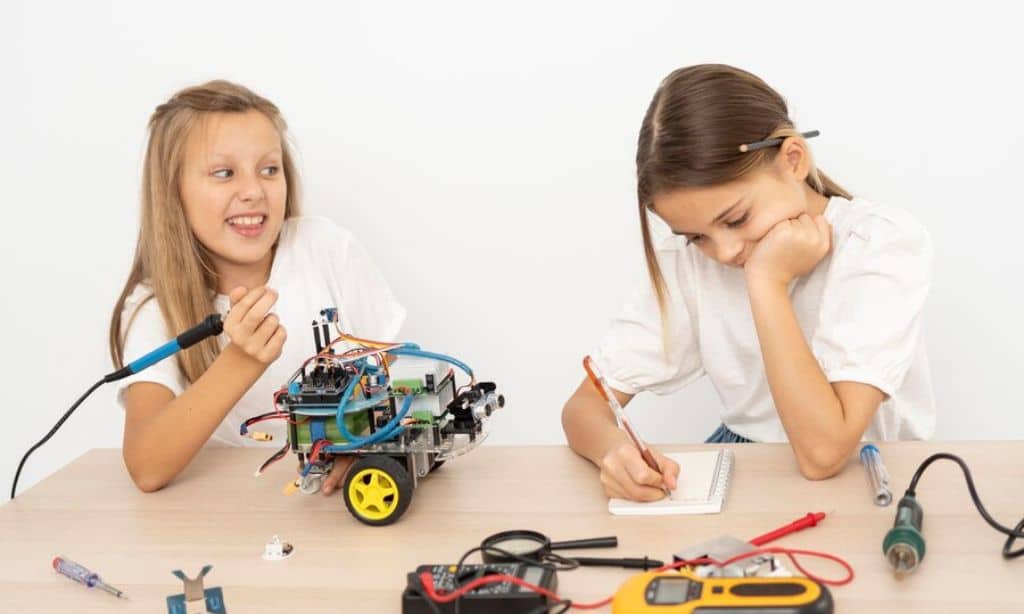In the quest to find the best educational toys for kids, parents and educators are increasingly turning to STEM (science, technology, engineering, and mathematics) focused playthings.
These toys not only entertain but also stimulate young minds, laying the foundation for future academic and career success. By combining play with learning, STEM educational toys make complex concepts accessible and enjoyable.
In this article, we’ll explore the 10 best STEM educational toys for kids that make learning fun, demonstrating how these innovative products can spark curiosity, encourage problem-solving, and foster a love for learning in children of all ages.
From building circuits to programming robots, these toys offer a hands-on approach to education that can ignite passion for STEM subjects and help develop critical thinking skills essential for the 21st century.
The Importance of Educational Toys
Educational toys are more than just playthings. They are tools that can shape a child’s development in numerous ways. These challenge kids to think, reason, and solve problems, thereby enhancing their cognitive development.
Many educational toys also help improve both fine and gross motor skills, which are essential for physical development. Moreover, some toys encourage cooperation and communication with others, fostering important social skills.
Educational toys also play a significant role in emotional growth. As children overcome challenges presented by these toys, they can boost their self-esteem and emotional intelligence. Additionally, open-ended toys spark imagination and creative thinking, allowing children to explore their innovative potential.
Best Educational Toys for Kids
These innovative toys bridge the gap between play and learning, offering children the opportunity to explore scientific principles, technological concepts, engineering challenges, and mathematical thinking through hands-on engagement.
By making learning fun, STEM toys not only impart valuable knowledge but also foster critical thinking, problem-solving skills, and creativity—essential attributes for success in the 21st century.
1. Snap Circuits Jr. SC-100 Electronics Discovery Kit
The Snap Circuits Jr. kit transforms the complex world of electronics into a playground of discovery for kids. By allowing children to build working electronic circuits without soldering, this toy makes learning about electricity and circuitry as fun as playing with building blocks.
Key Features:
- Age range: 8–15 years
- Over 30 snap-together electronic components
- 100+ projects to build
- Color-coded components for easy identification
- Comprehensive, easy-to-follow instruction manual
The Snap Circuits Jr. kit offers a hands-on approach to learning about electronics. As children experiment with different configurations, they develop logical thinking and problem-solving skills.
The toy provides a tangible understanding of how everyday electronics work, potentially sparking a lifelong interest in engineering. Research suggests that such hands-on experiences can significantly improve understanding and retention of complex concepts (Kontra et al., 2015).
2. LEGO Boost Creative Toolbox
The LEGO Boost Creative Toolbox ingeniously combines the timeless appeal of LEGO building with the modern world of coding. This fusion creates an engaging platform where children can bring their LEGO creations to life through programming.
Key Features:
- Age range: 7–12 years
- 847 LEGO pieces for building five multifunctional models
- Move Hub with built-in tilt sensor
- Interactive motor and color/distance sensor
- Compatible with free coding app
- Step-by-step instructions for building and coding
LEGO Boost introduces children to computational thinking and basic coding concepts through play. The visual, block-based programming environment lowers the entry barrier for novice programmers.
As children build and program their creations, they engage in problem-solving and develop spatial reasoning skills. The open-ended nature of the system encourages creativity and innovation, fostering a growth mindset crucial for STEM learning.
3. National Geographic Earth Science Kit
The National Geographic Earth Science Kit brings the wonders of geology into the home, transforming children into junior earth scientists. By allowing kids to conduct real experiments with actual mineral specimens, this kit makes the study of our planet’s composition and processes a thrilling adventure.
Key Features:
- Age range: 8+ years
- 15 real mineral specimens
- Materials for crystal growing experiments
- Comprehensive learning guide
- Magnifying glass and display stands
This kit introduces children to the scientific method through hands-on geology experiments. As they grow crystals and examine minerals, kids develop observational skills and learn about the earth’s processes.
The hands-on nature of the experiments can boost confidence in scientific abilities, potentially influencing future interest in STEM fields. Working with real geological specimens also fosters appreciation for the natural world, promoting environmental awareness.
4. Sphero SPRK+ STEAM Educational Robot
The Sphero SPRK+ brings coding to life with a programmable robot ball that combines play with learning. This engaging toy allows children to see the immediate results of their coding efforts, making abstract programming concepts tangible and exciting.
Key Features:
- Age range: 8+ years
- Durable, waterproof, clear polycarbonate shell
- Programmable LEDs for visual feedback
- Compatible with multiple coding languages
- Built-in gyroscope and accelerometer
- Access to hundreds of learning activities
Sphero SPRK+ offers a unique approach to teaching coding and robotics. By providing a physical object that responds to code, it creates a concrete connection between programming and real-world outcomes.
This tactile feedback helps solidify abstract concepts for all types of learners. The robot’s versatility in programming languages allows for scaffolded learning, enabling children to progress from simple to more complex coding as their skills develop.
5. MindWare Q-BA-MAZE 2.0 Ultimate Stunt Set
The MindWare Q-BA-MAZE 2.0 Ultimate Stunt Set turns the classic marble run into a creative building challenge that combines elements of physics, engineering, and art.
This innovative toy allows children to construct complex marble mazes, encouraging spatial reasoning and problem-solving skills.
Key Features:
- Age range: 6+ years
- 156 colorful cubes and 9 stunt pieces
- Ability to create countless unique designs
- Transparent cubes for visual tracking of marble paths
- 20 steel marbles included
Q-BA-MAZE 2.0 offers a rich learning experience that touches on multiple STEM concepts. As children design and build their marble runs, they explore physics concepts like gravity and momentum.
The open-ended nature of the toy encourages creative problem-solving and iterative design thinking, mirroring the engineering design process. It also promotes spatial reasoning skills, which are linked to success in STEM fields, particularly in engineering and physical sciences (Wai et al., 2009).
6. Thames & Kosmos Physics Workshop
The Thames & Kosmos Physics Workshop brings the excitement of a science lab into the home, allowing children to conduct real physics experiments in a safe and engaging way. This comprehensive kit introduces fundamental physics concepts through hands-on exploration and discovery.
Key Features:
- Age range: 8–15 years
- 36 experiment models
- 212 building pieces
- 64-page, full-color experiment manual
- Covers topics such as forces, energy, oscillation, and more
- Reusable components for repeated experimentation
The Physics Workshop provides a structured yet flexible approach to learning physics concepts. By engaging in hands-on experiments, children can observe and interact with abstract principles in a concrete way. This kit develops crucial scientific skills such as observation, hypothesis formation, and data interpretation.
The step-by-step nature of the experiments, combined with the ability to repeat and modify them, allows for scaffolded learning, supporting the development of a growth mindset when approaching scientific challenges.
7. Ozobot Bit Coding Robot
The Ozobot Bit is a tiny, smart robot that introduces coding concepts to children through both screen-free and digital methods. Its versatility makes it an engaging tool for learning the basics of programming logic.
Key Features:
- Age range: 6+ years
- Screen-free coding with Color Codes
- Block-based programming with OzoBlockly
- Optical sensors for line and color detection
- 25-minute battery life with 30-minute charge time
- Compatible with paper and digital platforms
Ozobot Bit makes coding accessible and fun for young learners. The dual approach of color coding and block-based programming caters to different learning styles and skill levels.
As children progress from drawing color codes to creating digital programs, they develop logical thinking and problem-solving skills. The robot’s small size and interactivity make abstract coding concepts tangible, helping children understand cause-and-effect relationships in programming.
8. Snap Circuits Arcade Electronics Exploration Kit
Building on the success of Snap Circuits Jr., the Arcade Electronics Exploration Kit focuses on creating fun, arcade-style games while teaching electronics. This kit combines entertainment with education, making circuit building an exciting adventure.
Key Features:
- Age range: 8+ years
- Over 35 snap-together parts
- 200 exciting projects to build
- Includes projects like disc shooter and programmable word fan
- Comprehensive, colored project manual
- Compatible with other Snap Circuits sets
The Snap Circuits Arcade kit takes electronic learning to the next level by incorporating game elements. This approach not only teaches basic circuit concepts but also introduces more complex ideas like input/output and simple programming.
As children build games, they develop problem-solving skills and gain insight into how electronic entertainment works. The kit’s focus on creating fun projects can sustain interest in electronics and potentially spark a passion for game design or electrical engineering.
9. 4M Crystal Growing Experiment
The 4M Crystal Growing Experiment kit allows children to grow their own crystals, providing a fascinating introduction to chemistry and crystal formation. This kit turns abstract chemical concepts into beautiful, tangible results.
Key Features:
- Age range: 10+ years
- Materials to grow 7 different crystals
- Includes display domes for finished crystals
- Illustrated instructions
- Safe and non-toxic chemicals
This kit introduces children to fundamental chemistry concepts through the exciting process of crystal growth. As they set up experiments and watch crystals form, children learn about supersaturated solutions, molecular structures, and the influence of environmental factors on crystal formation.
The kit also promotes patience and observation skills, crucial traits in scientific endeavors. The pride of creating something beautiful can boost confidence in scientific abilities and spark interest in further chemistry exploration.
10. Makeblock mBot Robot Kit
The Makeblock mBot is a STEM education robot that teaches kids about robotics, programming, and electronics. Its user-friendly design makes it an excellent starting point for children interested in the world of robotics and coding.
Key Features:
- Age range: 8+ years
- Arduino-based, open-source design
- Supports both graphical and text-based programming
- Various sensors, including line-follower and ultrasonic sensor
- Bluetooth connectivity for remote control
- Expandable with additional electronic modules
mBot offers a comprehensive introduction to robotics and coding. Its graphical programming interface allows beginners to create complex behaviors without getting bogged down in syntax, while more advanced users can transition to text-based coding.
As children build and program their mBot, they gain hands-on experience with mechanical assembly, electronic connections, and logical thinking. The robot’s expandability encourages ongoing learning and experimentation, potentially leading to more advanced robotics projects.
Takeaways
STEM educational toys offer a unique opportunity to make learning fun and engaging for kids. By incorporating hands-on experiences, these toys help children develop crucial skills for the future while fostering a love for science, technology, engineering, and mathematics. Whether it’s building circuits, programming robots, or designing marble runs, there’s a STEM toy out there to captivate every child’s interest and ignite their passion for learning.
The benefits of these toys extend far beyond the immediate joy of play. They lay the groundwork for critical thinking, problem-solving, and scientific reasoning—skills that are invaluable in our increasingly technology-driven world.
By making STEM subjects accessible and enjoyable at an early age, these toys can help to break down barriers and stereotypes, potentially influencing career choices and contributing to a more diverse STEM workforce in the future.
Remember, the key to maximizing the benefits of these toys is parental involvement. Engage with your children as they explore these toys, ask questions, and encourage their curiosity. With the right approach, these STEM educational toys can lay the foundation for a lifetime of learning, innovation, and scientific discovery.












































